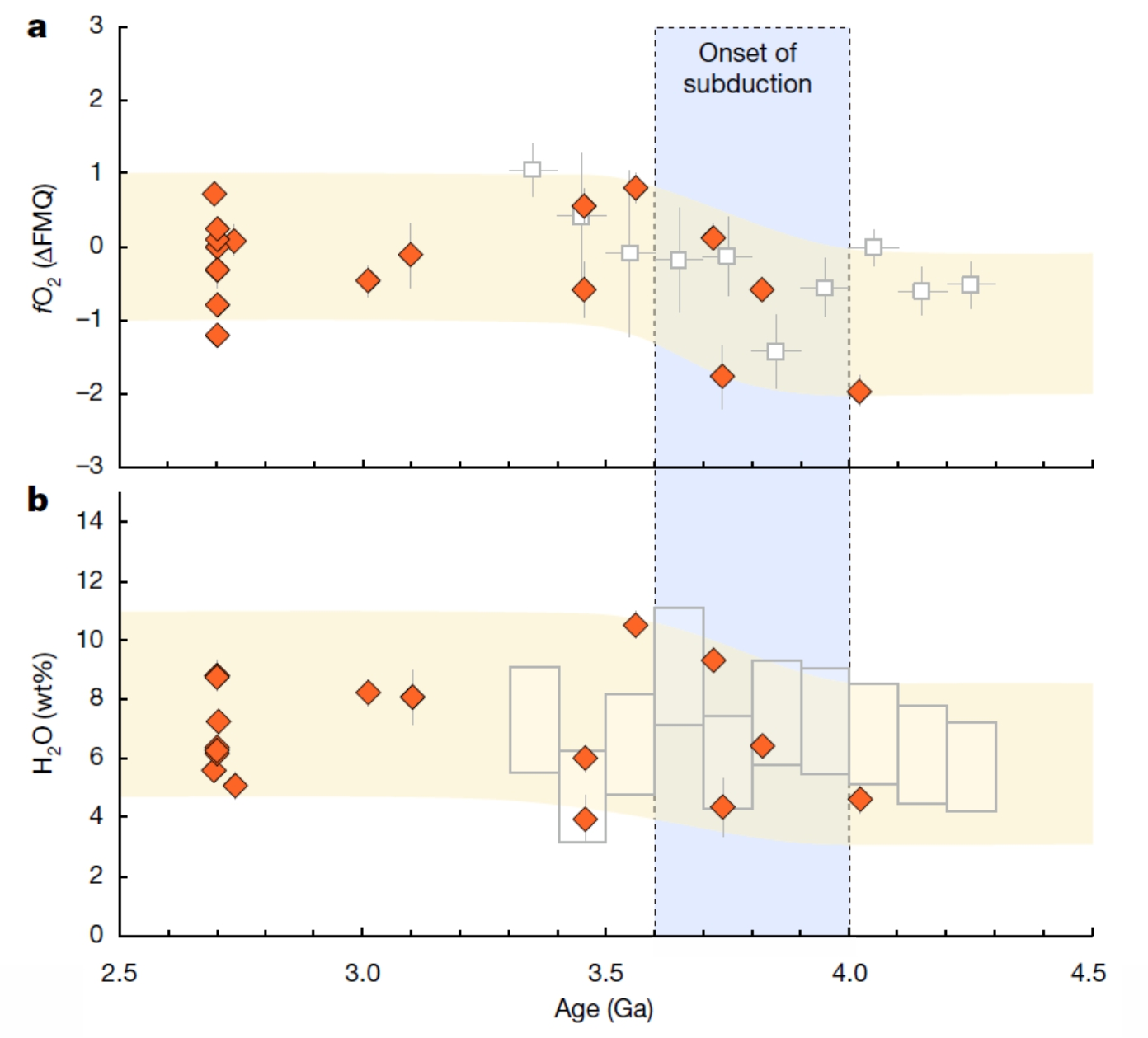Professors Rongfeng Ge, Wenbin Zhu, and Xiaolei Wang from School of Earth Sciences and Engineering, Nanjing University, in collaboration with Professor Simon Wilde from Curtin University in Australia, have developed a zircon oxygen fugacity-hydration meter. Using this method, they systematically determined the magmatic oxygen fugacity and water content of Archean granitic rocks (2.5 to 4 billion years ago) and found them to be similar to modern island arc magmas, indicating the existence of subduction processes in the Archean. This achievement is of great significance for revealing the origin of early continents, the initiation of plate tectonics, and the formation of key metal mineral resources. The research was published online on September 27, 2023, in the journal Nature with the title "Earth’s early continental crust formed from wet and oxidizing arc magmas." The paper can be accessed at: https://www.nature.com/articles/s41586-023-06552-0.
he formation of continental crust has shaped the Earth's surface, influenced its internal composition and structure, and created a habitable Earth and mineral resources essential for human survival. It is generally believed that the formation of modern continental crust is closely related to island arc magmatism caused by plate subduction. However, whether early continental crust formed in a similar subduction environment or other special tectonic systems is an unresolved question in the field of Earth sciences. Modern island arc magmas are characterized by relatively high oxygen fugacity and water content. However, due to the widespread metamorphic alteration of Archean rocks that make up the early continental crust, there has been a lack of reliable constraints on their magmatic oxygen fugacity and water content. To address this challenge, the research team combined two oxybarometers based on zircon trace elements and innovatively proposed a zircon oxybarometer – hydrometer. This method can calculate the water content of equilibrium magma based on the oxygen fugacity at the time of zircon crystallization, with an accuracy within 1 wt% (wt%: weight percent) (Figure 1a).

Figure 1 (a) The basic principle of the zircon oxygen fugacity-hydration meter, using Bishop Tuff as an example, the linear relationship in the inset illustrates the accuracy of this method; (b) Comparison of Archean and Phanerozoic magmatic oxygen fugacity and water content, where red, yellow, and purple represent the results of this paper's zircon oxygen fugacity-hydration meter.
Building on this new approach, the research team calculated the magmatic oxygen fugacity and water content of Archean granitic rocks in major cratons worldwide and found that they are similar to those in modern arc magmas relative the contemporary mantle. This suggests that a large amount of liquid water (ocean) and subduction process played a crucial role in the origin of early continental crust, which are also important for formation of habitable Earth relative to other terrestrial planets. This process also plays a significant role in the formation of many critical metal mineral resources. The study also shows that during the Eoarchean (3.6 to 4 billion years ago), the initiation of subduction led to a significant increase in the oxygen fugacity and water content of granitic magmas (Figure 2).

Figure 2 Increase in Archean granitic magma oxygen fugacity and water content during the early Archean (4.0 – 3.6 billion years) indicating the initiation of subduction, with red representing Archean granitic rock data and white squares representing detrital zircon data from the Jack Hills in Australia.
This study was completed in collaboration between Nanjing University and Curtin University in Australia, with Nanjing University as the primary completing institution. Professor Rongfeng Ge is the first author and corresponding author of the paper. The work was supported by the National Outstanding Youth Fund project and general project, and Distinguished Young Scholar Fund project of Natural Science Foundation of China.

